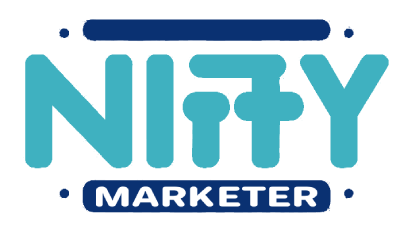In the digital age, where attention spans are fleeting and competition for engagement is fierce, crafting compelling calls to action (CTAs) in emails has become an essential skill for marketers and businesses alike. With the right approach, an effective CTA can transform a passive reader into an active participant, driving conversions and fostering meaningful interactions. Let’s delve into the art and science of creating CTAs that resonate with your audience and inspire action.
Understanding the Power of CTAs
Before diving into the intricacies of crafting CTAs, it’s crucial to understand their significance in email marketing. A well-crafted CTA serves as the gateway to desired actions, whether it’s making a purchase, signing up for a newsletter, or downloading a resource. It provides clear guidance to the recipient, nudging them towards the next step in their customer journey.
The Anatomy of a Compelling CTA
A compelling CTA comprises several key elements that work together to capture attention and drive action. Let’s break down these components:
Clarity: The language used in the CTA should be concise and easy to understand. Ambiguity can lead to confusion and hinder conversion rates. Use actionable verbs that leave no room for interpretation.
Value Proposition: Communicate the benefits of taking action. What’s in it for the recipient? Highlighting the value they stand to gain increases motivation and incentivizes engagement.
Urgency: Create a sense of urgency to prompt immediate action. Limited-time offers or exclusive deals can compel recipients to act quickly rather than procrastinate.
Visual Appeal: The design and placement of the CTA within the email play a crucial role in its effectiveness. Make sure it stands out visually and is prominently displayed to grab attention.
Personalization: Tailor the CTA to resonate with the recipient’s interests and preferences. Personalized CTAs have higher relevance and are more likely to elicit a response.
Crafting Irresistible CTAs: Tips and Best Practices
Now that we’ve covered the fundamentals, let’s explore some practical tips for creating CTAs that command attention and drive results:
Keep it concise and action-oriented: Use clear and compelling language that prompts immediate action. Avoid jargon or ambiguity that could confuse the reader.
Highlight the benefits: Focus on the value proposition and emphasize how taking action will benefit the recipient. Whether it’s saving money, solving a problem, or gaining exclusive access, make the benefits clear and compelling.
Create a sense of urgency: Incorporate words or phrases that convey a sense of urgency, such as “limited time offer” or “act now.” This motivates the recipient to take action promptly rather than putting it off for later.
Use contrasting colors and bold fonts: Make sure the Calls to Action stands out visually by using contrasting colors and bold fonts. This draws attention to the CTA and makes it more likely to be noticed and clicked on.
Test and iterate: Don’t be afraid to experiment with different CTAs to see what resonates best with your audience. A/B testing can help identify which CTAs drive the highest engagement and conversion rates, allowing you to refine your approach over time.
Audience Segmentation
Tailoring CTAs to specific segments of your audience can significantly improve their effectiveness. By understanding the unique needs, preferences, and behaviors of different audience segments, you can create CTAs that resonate more deeply and drive higher engagement rates. Utilize data analytics and segmentation tools to identify key audience segments and personalize Calls to Actions accordingly.
Social Proof
Incorporating social proof into your CTAs can instill trust and credibility, making them more persuasive. Highlighting testimonials, reviews, or social media endorsements can reassure recipients that taking action is a wise decision endorsed by others. For example, you could include phrases like “Join over 10,000 satisfied customers” or “See what others are saying about us” to add social proof to your CTAs.
Mobile Optimization
With the increasing prevalence of mobile devices, it’s essential to ensure that your CTAs are optimized for mobile users. This includes using responsive design to ensure CTAs display correctly on various screen sizes and placing them strategically within the email content for easy access on mobile devices. Keep in mind that mobile users may have different preferences and behaviors, so testing CTAs specifically for mobile engagement is crucial.
Clear Path to Conversion
Beyond the Calls to Action itself, it’s important to consider the entire user journey leading up to the desired action. Ensure that the email content leading to the CTA provides relevant information and builds anticipation for the action you want the recipient to take. A seamless transition from email content to CTA improves user experience and increases the likelihood of conversion.
Consistency Across Channels
Maintain consistency in messaging and branding across all channels to reinforce the CTA’s effectiveness. Whether a recipient interacts with your brand via email, social media, or your website, ensure that the messaging and tone remain consistent to create a cohesive experience. Consistency builds trust and familiarity, making it easier for recipients to recognize and respond to CTAs wherever they encounter them.
Compliance with Regulations
Ensure that your Calls to Actions comply with relevant regulations, such as GDPR or CAN-SPAM, to avoid potential legal issues and maintain trust with your audience. Include clear opt-in and opt-out mechanisms, provide transparency about data usage, and respect recipients’ preferences regarding communication frequency and content. Compliance with regulations not only protects your brand reputation but also demonstrates your commitment to ethical marketing practices.
Continuous Improvement
The process of crafting compelling CTAs is an ongoing journey of learning and optimization. Continuously monitor and analyze performance metrics such as click-through rates, conversion rates, and engagement levels to identify areas for improvement. Use data-driven insights to refine your CTAs over time, experimenting with different approaches and iterating based on what works best for your audience.
Real-World Examples of Effective CTAs
To illustrate these principles in action, let’s take a look at some real-world examples of compelling Calls to Actions:
1: “Shop Now and Save 20% – Limited Time Offer!”
2: “Download Your Free E-Book Today and Unlock Exclusive Tips!”
3: “Join Our Community of Satisfied Customers – Sign Up Now!”
Each of these examples incorporates elements of clarity, value proposition, urgency, and visual appeal to create CTAs that compel recipients to take action.
Conclusion
Crafting compelling calls to action in emails is both an art and a science. By understanding the key principles and best practices outlined in this guide, you can create CTAs that resonate with your audience and drive meaningful engagement. Remember to keep it concise, action-oriented, and visually appealing, and don’t forget to test and iterate to optimize your results. With the right approach, your email CTAs can become powerful tools for driving conversions and building lasting relationships with your audience.





